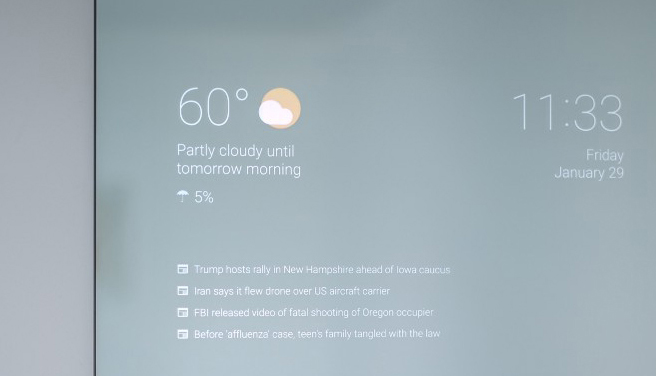We make stuff because we can. A smart mirror that tells you the forecast and news headlines as you shave? Pretty clever. This is only a prototype, just an experiment to do something cool, so it’s unfair to pick on it. But it seemed to summarise something I’ve thought for a while, namely that we’re still creating more and more clever ways to show the same basic types of information.
It’s a clever solution to the wrong problem. The methods of delivery are incredible, sleek, beautiful. But the data is always duplicating the same old thing. Time, news, notifications, stock price. I can look at my phone to get weather forecasts, or perish the thought, look out of the window. It’s done. We’ve fixed that. I really don’t need an ever so slightly quicker way of accessing the same information.
Apple still haven’t released official sales data for the Apple Watch, but it’s widely expected that they haven’t set the world alight. Having my messages piped to my wrist, literally being chained to this data stream, doesn’t feel that appealing. I’m obviously not the only one. ‘Digital detoxing’ is growing in popularity, with companies offering screen-free holiday retreats and day-to-day techniques for limiting screen time. Seems like we’ve reached the limit for the number of devices we can handle.
Alerts appearing on a tablet, phone and laptop simultaneously aren’t really helping streamline or enrich my life any more. Contemplative, in-between type moments in life – in the bathroom, the back of a car, on the tube – are important for creativity and thought, and really aren’t enhanced by more screens just because we can.
Technology tends to progress in two speed modes – great leaps forward, followed by periods of fiddling-round-the-edges. A great leap would have been the arrival of smartphones, apps and then tablets in 2007-10, and it feels like we’re now in fiddling-round-the-edges mode. Perhaps the Internet of Things idea – of networked devices that remove the need for screens – will be the next big jump. Technology like Google’s ongoing Project Soli, which makes interaction sensors using radar technology that can recognise hand gestures in the air. Until then, leave me to decide when I check my email.
Joseph Harries is Design Director at GW+Co


